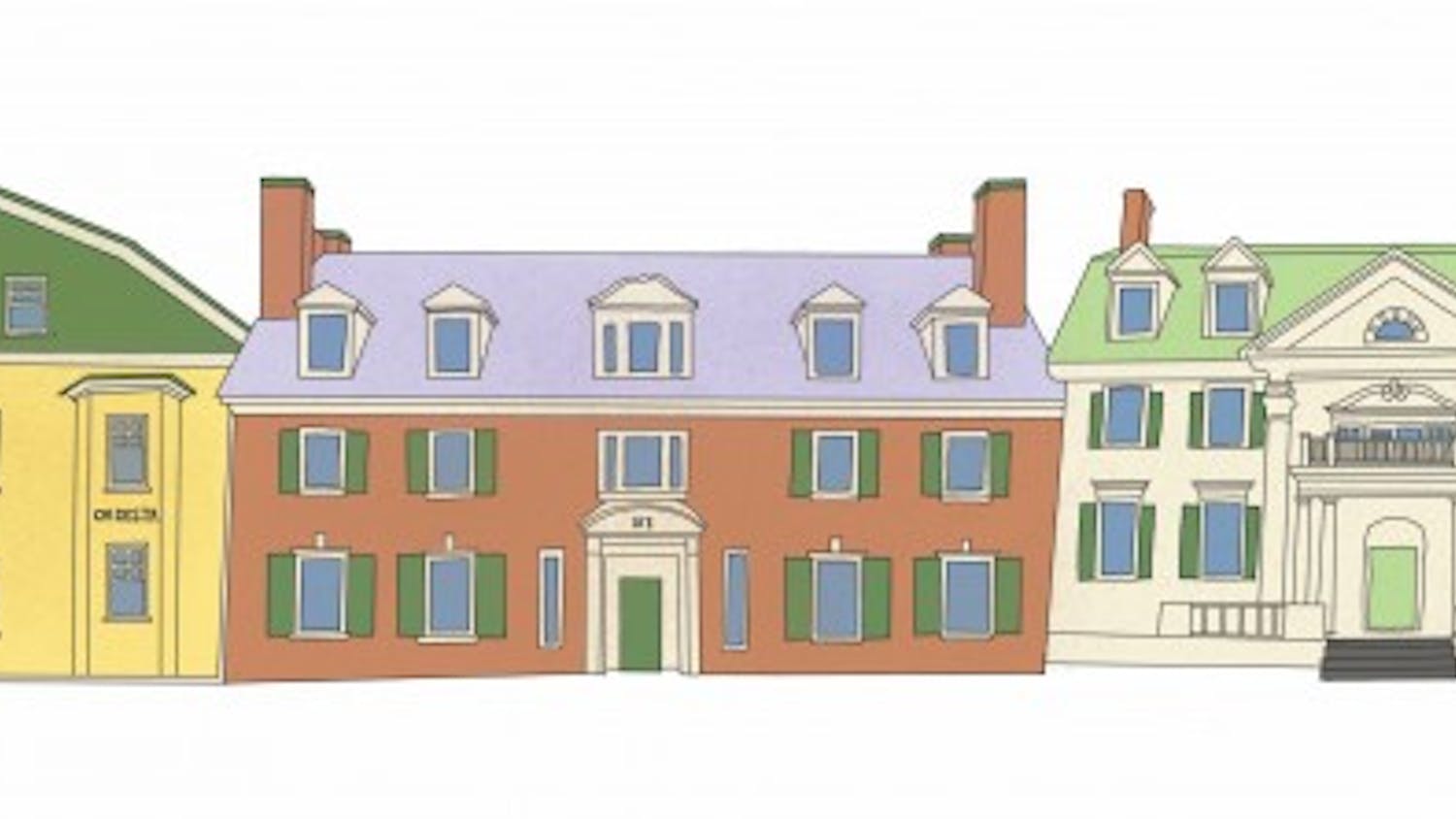This article is featured in the 2020 Winter Carnival special issue.
East Wheelock House Professor Sergi Elizalde’s home on campus is neatly surrounded by the East Wheelock residence halls: Andres, McCulloch, Morton and Zimmerman. This was the plan for all six of Dartmouth’s House communities; however, five years since the implementation of the House system, East Wheelock House remains alone in fitting that ideal.
This is only one of the many differences across the House communities, a system first introduced in fall 2016 as an attempt to promote a sense of continuity and community within residential spaces. As a pillar of College President Phil Hanlon’s Moving Dartmouth Forward plan, the House system has faced criticism from some students — columnist Tanner Jones ’22 called it a “failed social engineering project” in an opinion piece in The Dartmouth this fall.
There was also backlash against the now-retracted restricted dorm access policy, first enacted in September 2019. Under this protocol, students would only be able to access College residences within their own housing community, including restricted access to event spaces such as House Centers A and B, colloquially known as “the Onion” and “the Cube.” This policy was amended after a Student Assembly petition gathered nearly 3,000 signatures to return to universal access with added time restrictions.
West House member Akash Chadalavada ’22 expressed his frustration about the continued dorm restriction at night and how this turned his impartiality toward the House system into disdain.
“The dorm restrictions are a cause of annoyance and create difficulty,” Chadalavada said. “It is not pleasant to stand outside and wait to be let into a campus building.”
Chadalavada added that he thought the house system was unnecessary since Dartmouth is already small and has existing close communities.
First-year students are randomly assigned one of six houses when they receive their room assignments. The Class of 2023 is the first class to be collocated within their House communities, so each first-year residence hall now belongs to a particular house.
Prior to this change, first-years were grouped in their Houses by floors, and first-year residence halls featured students from various different House communities across the floors. This meant that a student in South House could be living in the River dormitories but attending house events in the Onion.
According to Dean of the College Kathryn Lively, the grouping of House communities this year has improved accessibility and proximity to various House events.
“[Last] winter, first year-students were either away from the upperclassmen dorms or their house professor’s house by location; it was dark, it was cold, it was icy,” Lively said. “We’ve seen a massive uptick of first-year students participating in house events across all [two] terms.”
Because the House system was superimposed on the campus’ existing buildings by relative location, the number of students in each house differs, with South House as the biggest with approximately 370 students and North Park as the smallest with around 220. According to Lively, the budget allocated to each House is calculated by the number of students in the community, and more jurisdiction has been given to students regarding the budget.
“We’re ceding more control of the budget because now most houses have very active executive councils,” Lively said. “Students are wanting to plan their own programming.”
The opportunities offered to students in each house vary. One example is alternative spring break trips, which began last year with East Wheelock House traveling to Puerto Rico and Allen House going to New Orleans. Lively said that these trips were spearheaded by the Dartmouth Center for Social Impact, and East Wheelock House and Allen House volunteered as the first cohort of houses to run such trips. DCSI then connected East Wheelock students with a sustainability and food justice collective in Puerto Rico to aid recovery efforts from Hurricane Maria.
“The students who went last year really enjoyed it,” Elizalde said. “I think we all had a life-changing experience, and then we decided to do the same thing again this year. It’s possible that if it’s successful in a few years, all of the Houses will be doing them.”
This year, West House will join the two houses from last year in leading an alternative spring break trip; students will be traveling to Portland, ME. Students from three of the houses will not have the same option to apply for these trips, but Lively recommends that a student reach out to their House leadership if they feel strongly about creating similar opportunities.
“Students could talk to their House professor; they could attend an executive council meeting and they could start to lobby,” Lively said. “I think if a student actually said, ‘This is what I’m passionate about, this is the problem, this is where I think we can contribute as a House — and I would be willing to work on this issue,’ I think there might be some uptake.”
Perhaps the most visible sign of distinction between the House communities is the type of gear each House offers its members for free. This can range from pastel blue School House sweatshirts and Allen House quarter zips to South House camping mugs and East Wheelock scarves, which are produced at the discretion of House executive councils.
“That’s one of the ways students actually get really excited about being on executive council — that each executive council is charged with swag,” Lively said. “They get a certain part of the budget for that, and each house has a different approach.”
Lively said that such significant changes as the House system are often highly controversial when first implemented, but eventually become the norm. In addition, the system is receptive and continues to change each year.
“Any change that you make is really horrifying, and then four years later, everybody’s used to it. Now, it’s what everybody knows,” Lively said. “[Houses are] just another place, a smaller and somewhat porous community within the larger community. Every year, it gets better. We get more student involvement and we’re much further along than we thought we would be when started the planning phase six years ago.”
The House system is a highlight for some Dartmouth students. West House student Monxell Mariano ’23 said he believes it has helped shape his sense of belonging at Dartmouth.
“I think community dinners really foster relationships between house members through good food and a good time,” he said. “The [House] system provides me with connections with students not only across the College, but also with students from the graduate schools.”
But those feelings may not be universally shared. A survey conducted by The Dartmouth from Jan. 27 to Jan. 31 with 261 respondents found that 73 percent of students disagree with the statement, “I feel a strong sense of community with those in my House.”



